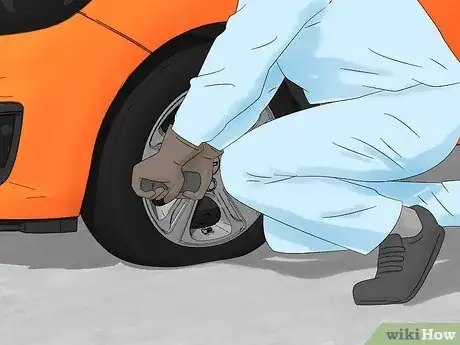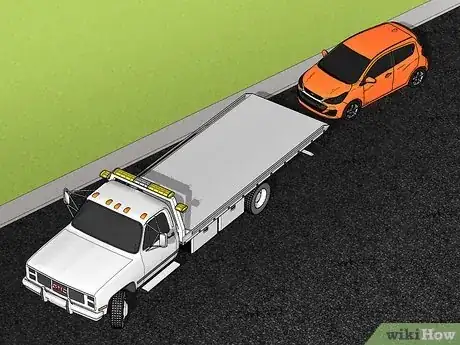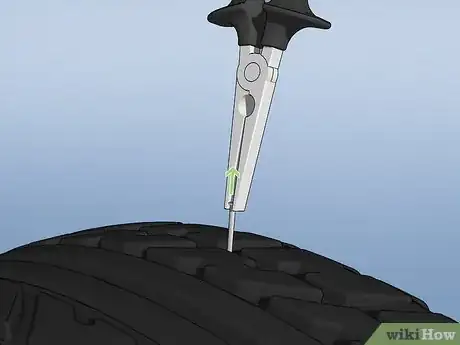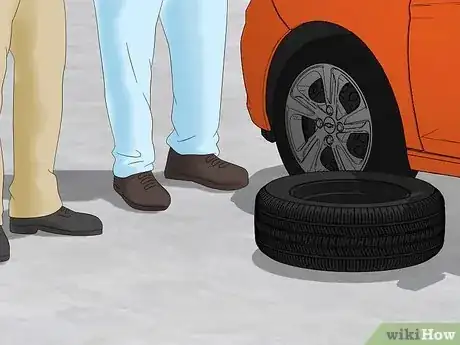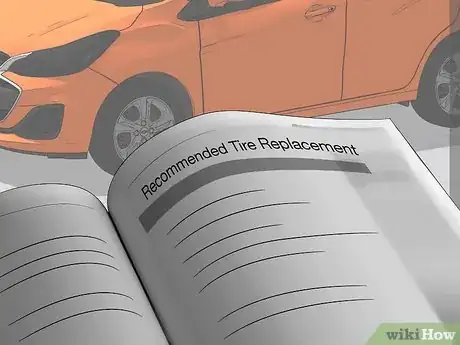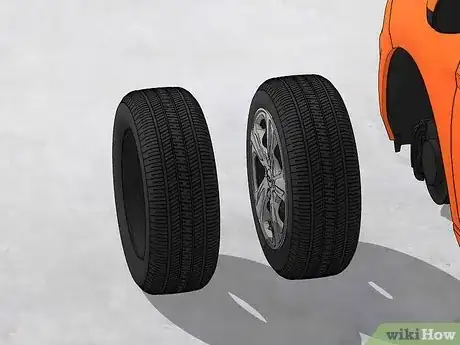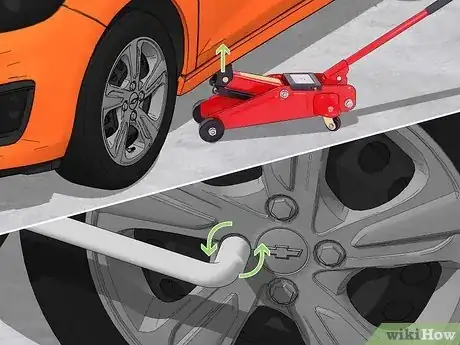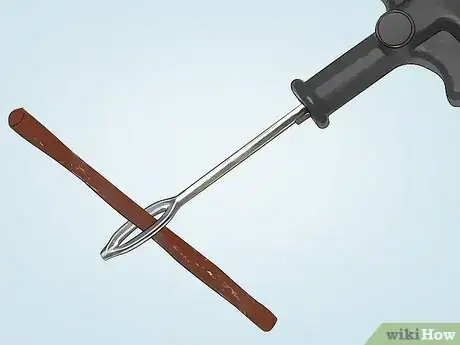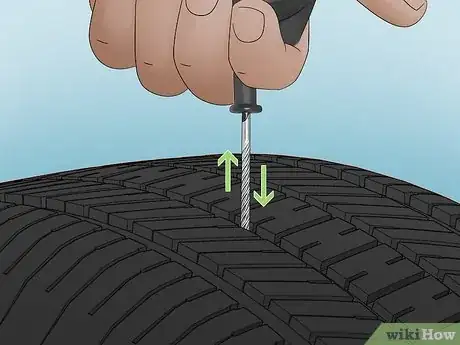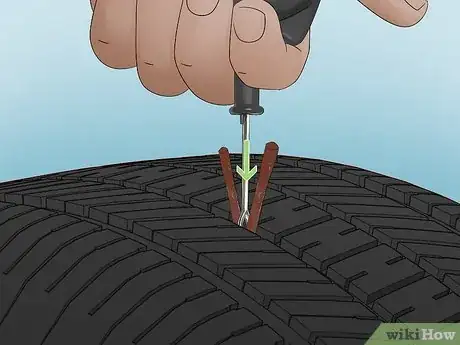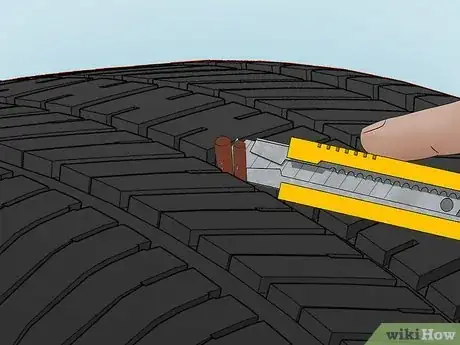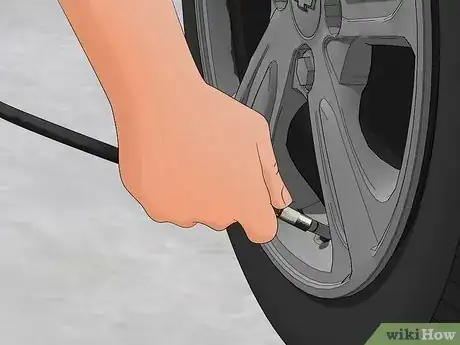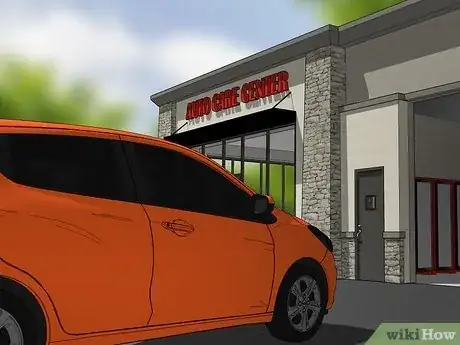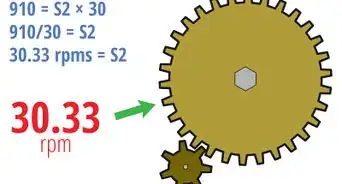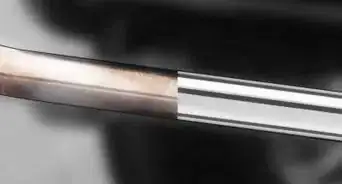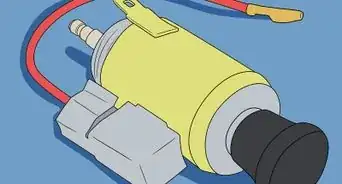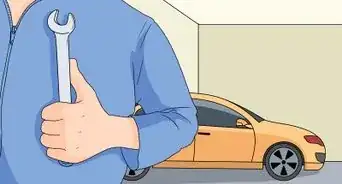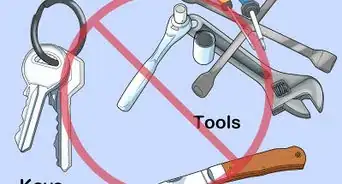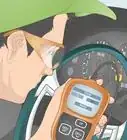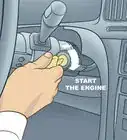This article was co-authored by Howard Fleischmann and by wikiHow staff writer, Kyle Hall. Howard Fleischmann is an Automotive Tire and Repair Specialist and the CEO of Community Tire Pros & Auto Repair, with ten locations throughout Phoenix, Glendale, Yuma, and Casa Grande, Arizona. Howard specializes in full-service auto repair and tire replacement and care for domestic/imported vehicles and large trucks. Howard’s dedication to Community Tire Pros & Auto Repair has earned their team multiple awards and features including the 2021 Phoenix Magazine AZ State 48 “Best of the Best!”, the 2020 “Best of Phoenix” in Auto Repair, the 2013 Master SBD award, the 2013 National “Top Shop” award by Tire Review, the 2012 Diversity Champions Phx Business Journal, the 2009 BBB Ethics award, the 2008 Phx Chamber of Commerce Impact Award -” Small Business of the Year”, and the 2008 ASU Spirit of Enterprise award. Howard is often referred to as “The Car Guy” for local TV stations and is a regular on TV’s Channel 3 Sunday, Good Morning Arizona monthly.
There are 11 references cited in this article, which can be found at the bottom of the page.
This article has been viewed 132,513 times.
If you have a nail in your tire, you’ll need to take your vehicle to a tire service technician to get it professionally fixed. Driving on a tire that hasn't been properly repaired by a professional can damage your vehicle and even cause an accident. The good news is that you can temporarily plug the hole in your tire so you don’t have to pay for an expensive tow truck to take you to a tire service technician. If you do plug your tire, make sure you go straight to a professional to get your tire permanently fixed.
Steps
Getting the Hole Patched Professionally
-
1Visit a tire service technician for a permanent fix. They'll take your tire off the rim and patch and plug it so it's safe to drive on again. If you want to keep your tire, you'll need to visit a professional. Plugging a nail hole on your own is only a temporary solution.[1]
-
2Drive your car to the technician if your tire isn't losing air. Take a look at your tire. If it looks flat, don't drive on it. If it doesn't, hold your hand above the nail to see if you can feel any air coming out. You can also spray the nail with soapy water and check to see if air bubbles form. If they do form, your tire is losing air. If your tire doesn't appear to be losing air, you should be able to drive it to a nearby technician to get the hole fixed.
- If your tire is losing air but it hasn't lost a lot yet, you can temporarily plug it with a tire repair kit so you're able to drive to a nearby technician.
Advertisement -
3Put on a spare or call a tow truck if your tire is losing air. Don't drive on your tire if it's losing air or you could damage your vehicle. If you have a spare tire with you, change it out with your punctured tire. Otherwise, call a tow truck and have them take your car to the nearest tire service shop.
Having Your Tire Replaced
-
1Measure the size of the hole in your tire to see if it's fixable. Pull the nail out with needle nose pliers so it's easier to measure the hole. If it's more than 1⁄4 inch (0.64 cm) across, you won't be able to fix it and you'll need to have your tire replaced.[2]
-
2Look to see if the nail punctured your tire inside the tread. If it did, and the hole is smaller than 1⁄4 inch (0.64 cm) across, a tire service technician should be able to repair your tire. If the nail is outside of the tread or on the side of your tires, it's not fixable.[3]
- If you're not sure, visit a tire service technician and get their opinion. Having your tire repaired will be cheaper than replacing it, so it's a good idea to find out if there's any way your tire can be fixed before moving forward.
-
3Visit a tire technician to have your tire replaced if it's not fixable. If your punctured tire has lost a lot of air, put on a spare or have your car towed. If it still has air in it, you can temporarily plug it with a tire plug kit so you can drive your car to a shop.
-
4Refer to the tire replacement recommendations in your owner's manual. Depending on your vehicle, you may need to replace half or even all of your tires if 1 tire is damaged. Make sure you follow the recommendations in your owner's manual or you could end up damaging your vehicle.[4]
- Vehicles with all-wheel drive and 4-wheel drive usually require all 4 tires to be replaced at the same time.
- If you're on a budget, ask your tire service technician if there's any way you can just replace the 1 punctured tire.
-
5Choose a new tire that's the same size and model as the rest. If you're only replacing the punctured tire, make sure the new tire matches the other 3 tires on your vehicle. Otherwise, the tires will wear and operate differently, and you could cause damage to your vehicle.[5]
- Ask your tire service technician for help picking out the right tire.
Using a Tire Plug Kit
-
1Buy a tire plug kit to temporarily plug the hole in your tire in an emergency. A tire plug kit will come with all the tools you’ll need to plug your tire, including tire plugs, an insertion needle, and a rasp tool.[6] Keep in mind that plugging your tire is only a temporary solution and does carry some risk. Using a plug from the outside of the tire can even damage the tire to the point that it's not usable. The only way to safely repair your tire is to have a professional tire service technician remove the tire from the rim and repair the tire from the inside.[7]
- You can buy a tire plug kit online or at your local department store.
- If your tire is flat, you'll need a portable tire inflator and a tire gauge so you can pump your tire after you plug it.
-
2Remove your tire if you can't easily access the nail. If you can't locate the nail or you're unable to reach it, you'll need to take your tire off to plug the hole. Use a car jack to lift your car 6 inches (15 cm) off the ground. Then, use a lug wrench to unscrew the lug nuts so you can pull your tire off. Once your tire is off, locate the nail.
-
3Determine if it's safe for your tire to be temporarily plugged. Depending on where the nail is in your tire and how big the hole is, you may not be able to use a temporary plug. If the nail is in the side of your tire or in the shoulder (the edges of the tire outside of the tread), you won't be able to use a temporary plug.[8] If the hole the nail made is more than 1⁄4 inch (0.64 cm) across, it's too big to safely plug. You'll need to put on a spare tire or have your car towed to a repair shop.
- Never use a tire plug in a hole that's too big or a hole that's located on the side or shoulders of the tire. The plug could come out while you're driving and cause an accident.
- If the nail is small and located in the tread of your tire, you should be able to use a tire plug kit to temporarily plug the hole in your tire.
-
4Run a tire plug through the hole at the end of the insertion needle. The insertion needle is the tool with a t-shaped handle and metal needle with a hole at the end. Center the plug in the hole so there’s an equal amount of rubber on each side of the needle hole. Once the plug is centered in the insertion needle, set the tool aside.[9]
-
5Remove the nail from your tire with needle nose pliers. Have the tools in the tire plug kit nearby so you can plug the hole quickly before a lot of air gets out. After you pull out the nail, set it somewhere safe so you can dispose of it later.[10]
-
6Insert the rasp tool into the hole and turn it back and forth. The rasp tool should look like the insertion needle, but it won’t have a hole and the end will be serrated. The serrated edges on the rasp tool will scratch up the hole in your tire so the rubber plug has something to grip onto. Pull the rasp tool out of the hole when you’re finished.[11]
-
7Push the plug into the hole using the insertion needle. Place the tip of the needle over the hole and firmly press down with both hands. You may need to apply a lot of pressure to get the plug into the hole. As you push the plug into the hole, the rubber ends will fold up and press together. Stop pushing once the rubber ends are about 1⁄2 inch (1.3 cm) away from going into the hole in your tire.[12]
-
8Pull the insertion needle up and out of the hole. The tire plug should stay in place in your tire. If the plug comes out, double check that you put it in the needle properly and try inserting it in the puncture hole again.[13]
-
9Cut the excess rubber off with a knife or razor. You don’t want the excess rubber to be sticking up above the tread on your tire. Carefully cut the rubber ends of the tire plug so the plug is nearly flush with the tread.[14]
-
10Inflate your tire if it's flat. Use a portable tire inflator and a gauge to make sure your tire is inflated to the right pressure. If you don't know what the recommended pressure is for your tire, check your owner's manual or look for a sticker on the driver's side door that has the recommended pressure on it.
- If you don't have a portable tire inflator or a gauge, you'll need to change out the tire with a spare or call a tow truck to bring your vehicle to a tire service technician.[15]
-
11Take your vehicle to a technician immediately to get your tire fixed. Now that the hole in your tire is plugged, you should be able to drive your vehicle to a technician. Make sure you have your tire repaired by a professional.[16] If there aren't any shops open, drive home and go straight to a shop the next day. Driving for long periods of time on a plugged tire is dangerous, and it could cause damage to your vehicle. Always check the instructions that came with your tire plug kit to see what distance you can safely drive with a plugged tire.[17]
Community Q&A
-
QuestionCan you drive with a nail in your tire?
 Drew Hawkins1Community AnswerWhile it is possible for you to not notice if a nail is stuck in your tire, it can be very dangerous and make the damage much worse if you keep driving that way. As soon as you see or notice a nail in your tire, you need to fix it. You can either remove the nail and patch the tire yourself or take your car to a mechanic or tire shop to have it repaired. The sooner you can get it fixed, the easier it will be to fix.
Drew Hawkins1Community AnswerWhile it is possible for you to not notice if a nail is stuck in your tire, it can be very dangerous and make the damage much worse if you keep driving that way. As soon as you see or notice a nail in your tire, you need to fix it. You can either remove the nail and patch the tire yourself or take your car to a mechanic or tire shop to have it repaired. The sooner you can get it fixed, the easier it will be to fix. -
QuestionShould I pull a screw out of my tire?
 Drew Hawkins1Community AnswerYes, you should remove it right before you patch it so you can plug the hole. The screw itself may actually be helping to hold the air inside of the tire, so don't pull it out until you're ready to repair it. Use a tire plug kit, which will come with all the tools you’ll need to plug your tire, including tire plugs, an insertion needle, and a rasp tool. But remember, a plug is temporary and you'll need to have the tire professionally repaired eventually.
Drew Hawkins1Community AnswerYes, you should remove it right before you patch it so you can plug the hole. The screw itself may actually be helping to hold the air inside of the tire, so don't pull it out until you're ready to repair it. Use a tire plug kit, which will come with all the tools you’ll need to plug your tire, including tire plugs, an insertion needle, and a rasp tool. But remember, a plug is temporary and you'll need to have the tire professionally repaired eventually. -
QuestionHow do you fix a tire that has a nail in it?
 Drew Hawkins1Community AnswerYou can temporarily patch a tire that has a nail in it and it will be driveable so you can bring it into a mechanic or tire shop to be professionally repaired. Use a pair of needle-nose pliers to remove the nail from your tire. Use a tire plug kit, which will come with all the tools you’ll need to plug your tire, including tire plugs, an insertion needle, and a rasp tool. Stick the rasp tool, into the hole and turn it back and forth to create an even opening. Run a tire plug through the hole at the end of the insertion needle and push it into the hole. Then, pull the insertion needle up and out of the hole to plug the tire.
Drew Hawkins1Community AnswerYou can temporarily patch a tire that has a nail in it and it will be driveable so you can bring it into a mechanic or tire shop to be professionally repaired. Use a pair of needle-nose pliers to remove the nail from your tire. Use a tire plug kit, which will come with all the tools you’ll need to plug your tire, including tire plugs, an insertion needle, and a rasp tool. Stick the rasp tool, into the hole and turn it back and forth to create an even opening. Run a tire plug through the hole at the end of the insertion needle and push it into the hole. Then, pull the insertion needle up and out of the hole to plug the tire.
Warnings
- Never inflate a tire to the maximum tire pressure that's listed on the tire. Driving on the road causes your tire to expand. This can increase the tire pressure to the point that it surpasses what it's able to handle.[18]⧼thumbs_response⧽
Things You’ll Need
- Lug wrench
- Car jack
- Tape measure
- Tire plug kit
- Needle nose pliers
- Knife or razor
References
- ↑ Howard Fleischmann. Automotive Tire & Repair Specialist. Expert Interview. 4 June 2021.
- ↑ https://www.tireindustry.org/tire-maintenance/tire-repair
- ↑ https://www.tireindustry.org/tire-maintenance/tire-repair
- ↑ http://www.chicagotribune.com/classified/automotive/sc-motormouth-autos-0323-column.html
- ↑ https://www.tireindustry.org/tire-maintenance/tire-replacement
- ↑ https://www.tireindustry.org/tire-maintenance/tire-repair
- ↑ Howard Fleischmann. Automotive Tire & Repair Specialist. Expert Interview. 4 June 2021.
- ↑ Howard Fleischmann. Automotive Tire & Repair Specialist. Expert Interview. 4 June 2021.
- ↑ https://www.youtube.com/watch?v=v4R8_oUVDx8&feature=youtu.be&t=72
- ↑ https://www.youtube.com/watch?v=v4R8_oUVDx8&feature=youtu.be&t=23
- ↑ https://www.youtube.com/watch?v=v4R8_oUVDx8&feature=youtu.be&t=60
- ↑ https://www.youtube.com/watch?v=v4R8_oUVDx8&feature=youtu.be&t=84
- ↑ https://www.youtube.com/watch?v=v4R8_oUVDx8&feature=youtu.be&t=92
- ↑ https://www.youtube.com/watch?v=v4R8_oUVDx8&feature=youtu.be&t=94
- ↑ https://www.youtube.com/watch?v=v4R8_oUVDx8&feature=youtu.be&t=136
- ↑ Howard Fleischmann. Automotive Tire & Repair Specialist. Expert Interview. 4 June 2021.
- ↑ https://www.tireindustry.org/tire-maintenance/tire-repair
- ↑ Howard Fleischmann. Automotive Tire & Repair Specialist. Expert Interview. 4 June 2021.
About This Article
To temporarily plug a nail hole so you can drive your car to a technician, locate the nail in your tire. If you're having trouble accessing the nail, you might have to take your tire off. Then, remove the nail using needle nose pliers. Use a tire plug kit to insert a rubber plug into the hole. Cut off the excess rubber sticking out using a knife or razor blade. When you’re finished, drive your car to a technician to get it professionally repaired. For more tips on repairing a nail hole in your tire, like how to recognize holes that can't be plugged or fixed, keep reading!
